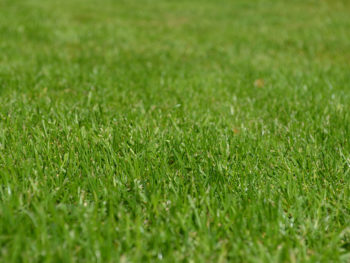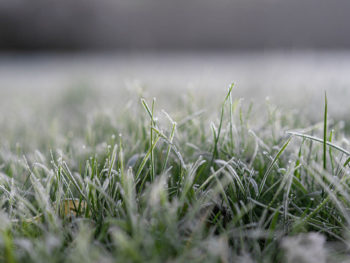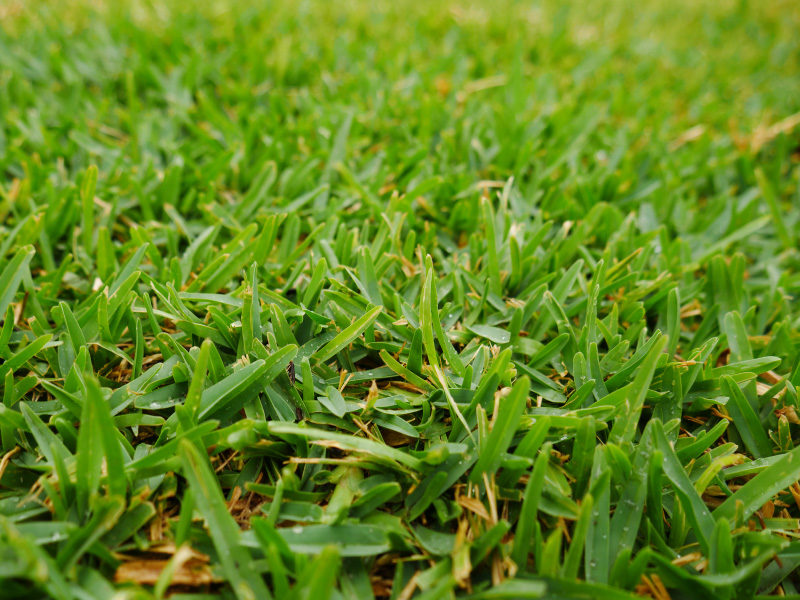When it comes to lawn maintenance, there’s always one thing you can count on – you’re going to have to contend with weeds. Weeds are undoubtedly annoying, and getting rid of them can be time-consuming. If you prefer to avoid the use of chemicals and herbicides on your lawn, here are some useful strategies you can try to beat the weeds.
Natural weed control remedies
There are a number of natural remedies floating around – some of which are surprisingly effective. You can often make them with ingredients you already have in the house.
Vinegar is a particularly effective one and is considered a non-toxic alternative. Try this: add a cup of table salt to 1 litre of white vinegar and stir well to combine. Once the salt has dissolved, you can either add the mixture to a spray bottle and spray onto the weeds, or use a paintbrush to brush the leaves of the weeds you want to kill. However, be careful you don’t get the mixture onto your grass or soil. Check the results after a few hours, and apply a further treatment if needed.
Like the use of many herbicides or inorganic fertilisers, over time this will affect the microbiology of your soil, so use it sparingly.
Try a flame weeder
This is the perfect tool for those who don’t want to rely on pesticides – a propane torch that burns the weeds. These weed torches can generate heat up to 2,000 degrees Fahrenheit, so be careful. Select one with less power that’s suitable for homeowners. It’s great for spot weeding.
Burn them
Weeds don’t react very well to heat, and there are a few ways you can “cook” them.
Try pouring boiling water over weeds that are growing in the cracks of concrete or in gaps between paths or tiles – this will destroy the cellular structure of the plant and it will quickly die. To prevent weeds re-growing, try this trick once a week or so. Don’t use this strategy on weeds actually growing in your lawn, however, as the water will burn the grass as well.
If you have an area of your lawn that’s more weeds than grass, you could try solarisation. You simply use a sheet of plastic (any plastic will do, but black plastic tends to work best as it attracts more heat) to cover the patch of weeds, and weigh down the edges with heavy objects. Give the weedy area a bit of water before you do so, as moisture will enhance the effect. Then just leave the plastic alone for 4 – 6 weeks in summer, or 8 – 10 weeks in winter. The plastic cover will prevent sunlight and air from reaching the weeds, meaning they can’t grow, and the high temperature under the plastic will eventually kill the weeds. Keep in mind that this will kill the grass as well, so this strategy is only useful on a thick patch of weeds. And it’s worthwhile topping up the soil with some organic material once you’ve finished to restore it to health.
Mow for weed control
You might think that mowing your grass very short will also have the effect of scalping the weeds – but this is not the best strategy. It’s far better to mow high and leave your grass longer, as the longer blades will shade the weeds and prevent them from growing. Weeds need access to sunlight to flourish and thrive, and cutting off their access will stress and weaken them.
Fertilise correctly
One of the best forms of weed control is growing a thick and well-fed lawn. Fertilising your lawn at least twice a year will help your grass stay strong and be less likely to develop a weed problem. The two best times a year to fertilise are in spring and autumn. Be careful not to over or under-fertilise. Over-fertilising will encourage weed growth, while under-fertilising will ensure your lawn is not healthy enough to outcompete the weeds.
Click here to discover seven lawn fertilisation mistakes to avoid.
Water well
Water your lawn deeply but only as often as it really needs it. Watering little and often discourages the grass from developing deep roots, and instead encourages the growth of shallow-rooted weeds.
Click here to discover the do’s and don’ts of watering your lawn.
Outcompete the weeds
Planting a variety of grass that grows strongly and vigorously and will be able to successfully outcompete weeds is a great start. Choose a hardy variety such as Sir Walter Buffalo that has a dense growth habit and is better than most other varieties at outcompeting weeds.
And the most obvious one of all – hand weeding
Hand weeding is an often-overlooked strategy when it comes to removing weeds – because it’s time intensive and laborious. In our quick-fix world, everybody is looking for a fast and easy solution. However, hand weeding is very effective, and requires minimal equipment. If you get in the habit of removing a few weeds every time you head out into the garden, you’ll be able to stay on top of the weed problem and it won’t be an excessive task. And if you enjoy spending time outside, this is the perfect excuse to enjoy a bit of sunshine and fresh air. Not to mention the peace and quiet – there’s a very good chance nobody in your family will want to help you!
To remove weeds effectively by hand, give the area a good watering first to loosen the soil and make removal easier. Use a shovel, hoe or fork to help dig difficult weeds out, making sure you remove all the roots.
And most importantly – be vigilant. It’s important to remove weeds soon after they appear so that they don’t spread too far. If the weeds are flowering or seeding, whipper-snip or mow the tops off before the seeds can spread far and wide. A little bit of prevention will work wonders.
If all else fails …
If you’ve tried everything but you’re still losing the battle against weeds, you might have to resort to some kind of pre-prepared treatment. There are many organic weed treatments on the market that won’t harm your grass, but which will effectively kill the weeds. If you’re using one of these, water your lawn well once or twice a week.
Having a weed free lawn requires regular care and attention, but it’s not impossible. Prevention is far better than cure, so get out there now before the weeds take hold in spring and you’ll be enjoying a beautiful, weed-free lawn over summer.
For a more detailed look at how to get rid of dandelions without chemicals, click here.
For more on how to get rid of mushrooms and toadstools in your lawn, have a read of this article.
Click here to learn how to control summer weeds.
Find out more about getting rid of clover in your lawn here.





 8 steps to get your lawn prepared for winter
8 steps to get your lawn prepared for winter
